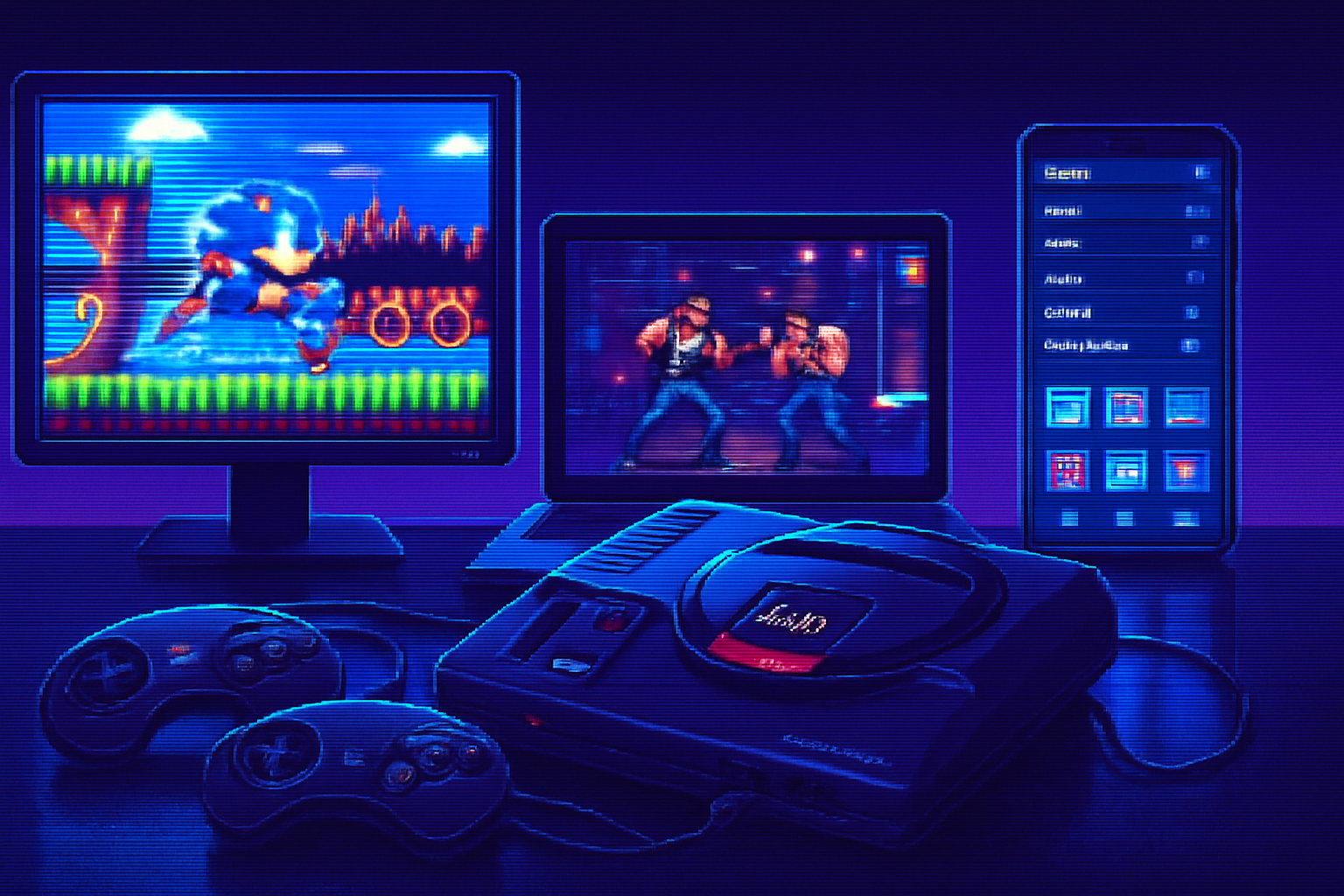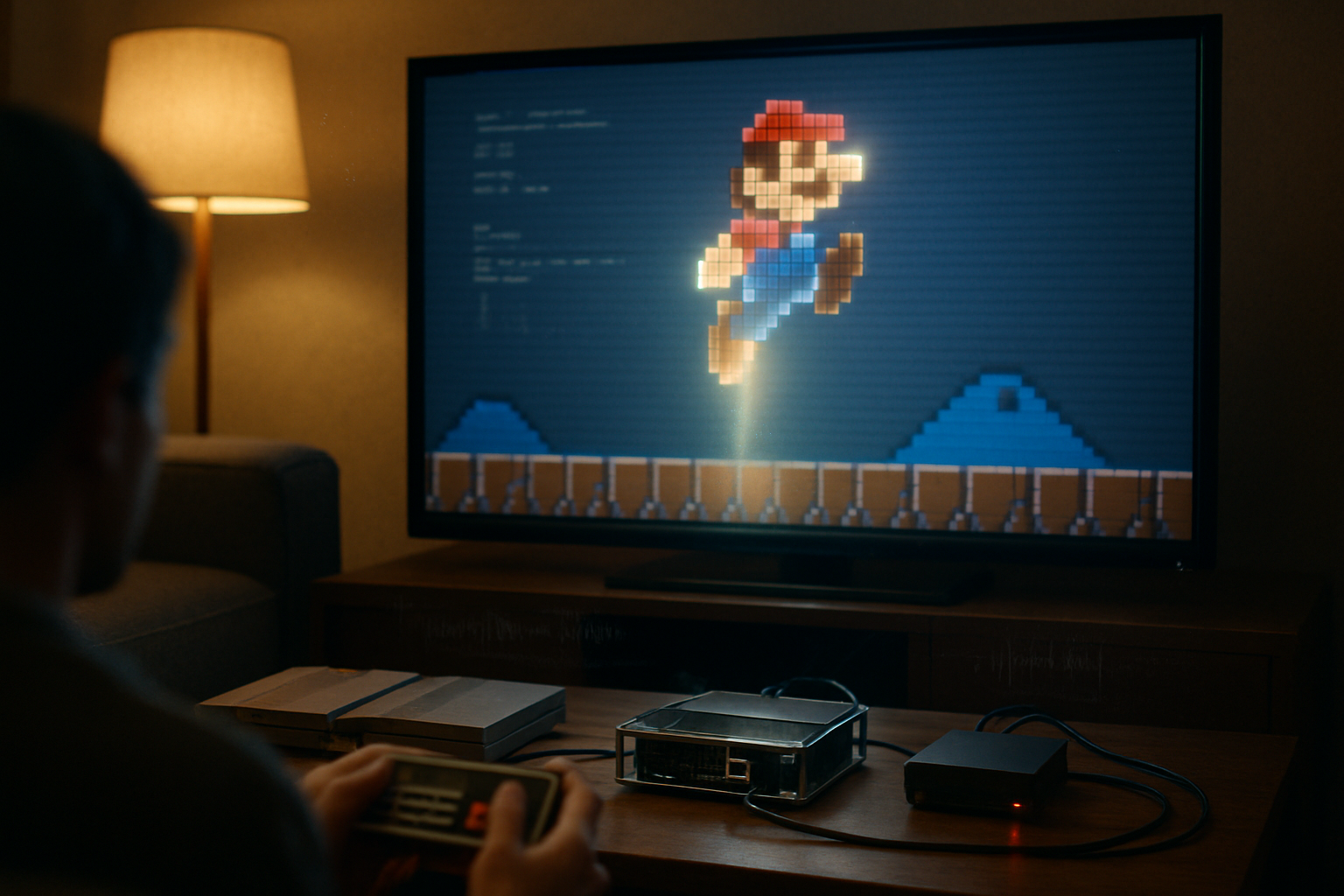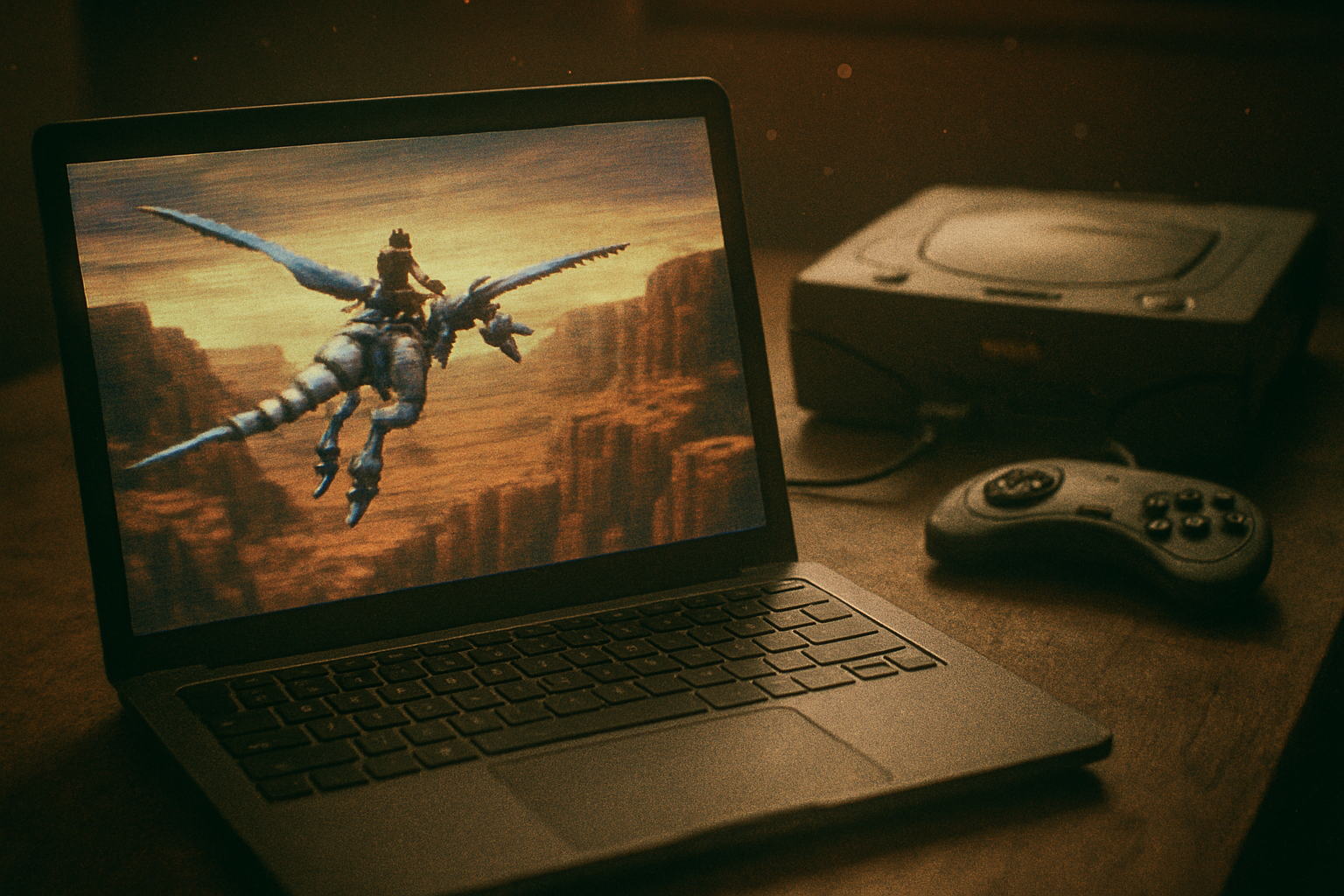· retrogaming · 7 min read
The Evolution of Neo Geo AES Emulators: From Basic to High-Definition
A journey through Neo Geo AES emulation: how homebrew programs went from rough, playable clones to ultra-configurable engines that can render legends like Metal Slug in eye-searing high definition - or in perfectly preserved, museum-grade accuracy.

It’s 1998. You’re huddled over a PC with a 15-inch CRT, a pirated ISO on a floppy (or whatever passed for magic), and Metal Slug is running at a jittery 30 fps with occasional sound hiccups. The pixels are chunky, the input feels numb, and you swear that the machine hated you personally.
Fast forward twenty years. The same game runs with smooth animation, perfectly mapped controls, netplay, save states - and you can choose whether it looks like a dingy arcade cabinet viewed through fogged glass or a crisp, modern-rendered spectacle on a 4K monitor. That leap - from playable but crude reproductions to configurable, high-definition experiences - is the story of Neo Geo AES emulators.
The first act: rough beginnings and the thrill of play
In the late 1990s and early 2000s, emulation was a scrappy, hacker-driven art. If it worked at all, it was cause for celebration.
Kawaks and NeoRageX were among the first widely used Neo Geo-capable emulators. They offered playable compatibility for many titles and were optimized for Windows PCs of the era. They often sacrificed accuracy for speed - pragmatic choices that let you actually play classics on modest hardware. See Kawaks on Wikipedia for an overview: https://en.wikipedia.org/wiki/Kawaks
Early emulators focused on reverse-engineering hardware behavior and CPU/memory mapping. Graphical glitches, sound desyncs, and missing features were common, but the miracle was simply getting a cart-based arcade board to run on a home PC.
If emulation history were a novel, these were the ragged, electrified opening chapters: full of ingenuity, jagged edges, and, occasionally, molten bugs.
The accuracy revolution: preservation over polish
Around the mid-2000s a different philosophy gained traction: accuracy and preservation. MAME (Multiple Arcade Machine Emulator) moved from a hacky convenience to a canonical preservation project. The goal wasn’t just to make games playable - it was to faithfully reproduce hardware behavior for posterity and research.
- MAME’s emphasis on documentation and hardware accuracy raised the bar - timing, sound chips, memory banking, and edge-case behavior started to matter. Preserving how a machine actually behaved became the ethical imperative for emulation projects. More on MAME:
This turn had consequences: emulators got slower and more demanding, but they also became trustworthy records of how arcade boards actually functioned.
The performance-and-enhancement era: FinalBurn and the rise of modern features
Not everyone wanted strict museum fidelity. A parallel line of development emphasized performance, user-facing features, and graphical enhancements.
FinalBurn Alpha (FBA), and later FinalBurn Neo (FBNeo), became favorites for those who wanted both high compatibility and modern conveniences - shaders, upscalers, save states, and configurable inputs. FinalBurn Neo is actively developed and focuses on compatibility and speed across platforms:
RetroArch and libretro cores brought portability and frontend niceties - uniform input mapping, cross-platform shader support, and unified settings. RetroArch’s ecosystem made it trivial to run FBNeo or MAME cores with the same user interface:
This era gave players choices: do you want your run-through to be faithful to the original imperfections, or cosmetically improved and silky-smooth?
The high-definition era: shaders, upscalers, and FPGA purity
Here’s where things get interesting for people who care about how pixels die and are reborn.
Pixel-art upscalers (xBR, hq4x, xBRZ) and other algorithms let low-resolution sprites be enlarged with fewer artifacts. They understand that pixels are not just square bricks; they’re patterns. Apply them cleverly and sprites retain detail without the ragged staircase of naive scaling.
Shader chains - dark little scripts that sit between the emulator and your screen - can emulate CRT curvature and scanlines, or remove them entirely while adding bloom, curvature correction, and other modern effects. Want Metal Slug with CRT glow and bloom? Done. Want it perfectly flat and razor-sharp on a 4K monitor? Also done.
MiSTer and other FPGA projects introduced a third path - hardware-level re-implementation rather than software emulation. FPGA cores recreate the logic of the original board in hardware, producing behavior close enough to the real thing that even obsessive purists nod in grudging approval. MiSTer’s Neo Geo core is an example of this approach:
In practice, software emulators plus modern shaders deliver a broader palette of options to most players, while MiSTer appeals to collectors who want the thinnest possible fidelity gap to original hardware.
Popular Neo Geo emulators today and what makes them stand out
FBNeo (FinalBurn Neo)
- Strengths - High compatibility, performance, active development, easy to use with modern frontends. Great for folks who want a polished experience with enhancements.
MAME
- Strengths - Accuracy and preservation. Preferred for historical fidelity and debugging corner-case behavior. If you’re curating a museum of how the hardware actually worked, MAME is your archivist.
RetroArch (libretro cores)
- Strengths - Massive portability, consistent UI, shader support, and easy frontend configuration. Use RetroArch + FBNeo core to get the best of both worlds.
Mednafen
- Strengths - Accurate, deterministic emulation with robust input handling. Good for players who favor precision and consistent timing.
MiSTer FPGA
- Strengths - Hardware-level implementation and ultra-low latency. If you want authentic timing and minimal surprises, MiSTer is the high-fidelity hardware substitute.
Choosing your path: accuracy, aesthetics, or both?
Ask yourself three quick questions:
- Do you want pixel-perfect historical accuracy? => Use MAME or MiSTer.
- Do you want an enhanced, configurable experience with shaders and upscaling? => Use FBNeo or RetroArch with the FBNeo core.
- Do you want portability (phone, Steam Deck, Windows)? => RetroArch or FBNeo goes everywhere.
There’s no moral hierarchy here - only preferences. Like choosing between vinyl and a remastered digital file, both are valid pleasures.
Practical HD setup tips (quick and usable)
- Start with an accurate core - FBNeo for play, MAME for preservation.
- Use integer scaling when possible to avoid uneven pixel stretching.
- Experiment with upscalers (xBRZ, hq4x) for a cleaner look; use CRT shaders if you want nostalgia.
- Keep audio latency low - emulate the audio hardware or use the emulator’s low-latency audio backend.
- For the purist - consider MiSTer with a Neo Geo core and a low-latency display.
Example shader chain (RetroArch) you might try:
- Integer scale -> 2. xBRZ (2x–4x) -> 3. subtle bloom or CRT if desired
That combination gives you crisp sprites while preserving the feeling of the original art.
Legal note (because someone always needs a reminder)
Emulators are legal tools. ROMs and BIOS files may be copyrighted and their distribution often isn’t. If you emulate, own the original cartridge or board, or consult your local laws. MAME’s preservation stance and legal FAQ are a useful read: https://www.mamedev.org/faq/
Why this matters: preservation, play, and the ongoing debate
Emulation is where archaeology meets entertainment. It preserves the ephemeral - cartridges disintegrate, arcade boards become doorstops, and corporate servers disappear. The work of emulator authors keeps those games alive, and the shift to high-definition rendering gives new life to old art.
And yet - there’s a cultural argument at the center: should we fix what isn’t broken, or preserve the flaws that made those games what they were? There’s room for both. You can play Metal Slug exactly as it showed up in 1996, or you can play it as a hyper-clean modern flavor of the same dream.
Emulation’s evolution from crude passable ports to sophisticated, high-definition re-creations reflects something broader about technology: we rarely choose between accuracy and convenience; we build ways to have both.
Further reading and useful projects
- MAME (Multiple Arcade Machine Emulator): https://www.mamedev.org/
- FinalBurn Neo (FBNeo) on GitHub: https://github.com/finalburnneo/FBNeo
- RetroArch (libretro): https://www.retroarch.com/
- MiSTer FPGA NeoGeo core: https://github.com/MiSTer-devel/Main_MiSTer/wiki/NeoGeo
- Mednafen: https://mednafen.github.io/
Playful, faithful, or somewhere in between - however you choose to experience Neo Geo titles, the options today are richer and weirder than they ever were. And that, as anyone who has yelled at an input lag report or cried over a perfect scanline, is a small civilization-building miracle.



